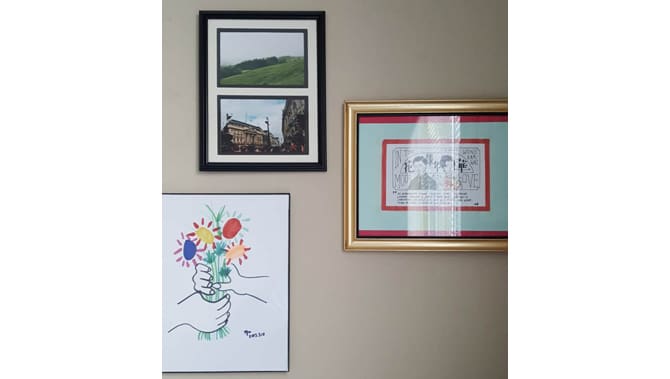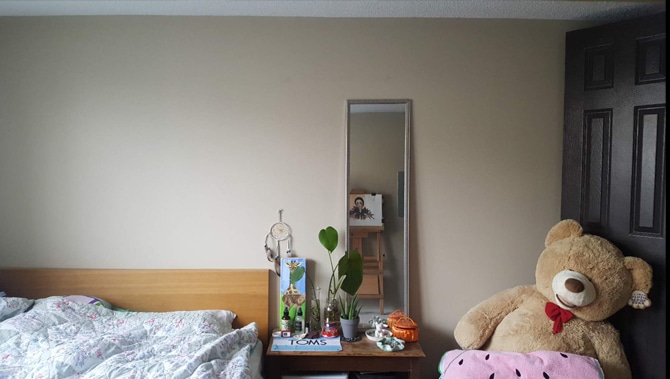More Focus, Less Clutter
At the end of last year, I started a decluttering project where I went through all my belongings and tidied up everything I owned, physical or digital. The project lasted for almost three weeks in the midst of holiday engagements and various year-end housekeeping items.
My Tidying Project was inspired by three sources throughout the year: Heart Danshari, The Minimalists, and Marie Kondo.
Heart Danshari (断舍离) is a book by Japanese author Eiko Yamashita. It is the decluttering book that took Chinese readers by storm. I read the book earlier in the year and felt amazed by the philosophy behind Danshari, which refers not just to physical clutter, but also to mental and emotional clutter.
Later in the summer of 2018, I came across the Minimalists Podcast and I quickly became a fan. In those episodes, Joshua and Ryan talked about the Minimalism concept from all aspects with practical approaches. After reading this blog post on downsizing, I had the idea of having a thorough decluttering project or jumping into the 30-Day Minimalism Game.
What really put me into action was after reading The Life-Changing Magic of Tidying up and Spark Joy by Marie Kondo, the Japanese Organizing Queen, in mid-December. At this point, I have read enough about decluttering and downsizing. It felt as if a voice has been whispering in my ear throughout the year to re-value my possessions, tangibles or intangibles, and that it would not stop until I do so.
So I did. Mid-December, a perfect time for a year-end decluttering project.
My approach and experience
Instead of doing the 30-Day Minimalism Game, I kept my decluttering project personal, if not secretive. I mainly followed the approach by Marie Kondo, which was also easier since I had the books in my hand at that moment.

The Life-Changing Magic of Tidying up is a great place to start for anyone who is new to the concept of decluttering and tidying up. It explains the philosophy and approach behind tidying, as well as real-life cases of her clients who went through the process. On the other hand, Spark Joy serves as a complementary and practical guide while you are going through the process. Someone compared the first one as the textbook where the second one as the practice handbook.
To start the project, there is a certain order that you follow. Marie Kondo recommends you start with clothing, books, papers, and end with miscellaneous and sentimental items. And these categories are broken down into further groups. The order can be different for everyone as it is ranked by function, information, emotional value, and rarity. The point is to start with the most common and easy category first. This will help you gain momentum, and the process will go much smoother.
Now, my experience. The entire project took me about three weeks, which was three times longer than I planned.
When I was in the process, it was painful and hectic. During the time period, my room was a complete mess. For each category, I gathered everything together so I had an idea of how much I own. And for each object, I examined my relationship with it: why did I have it? How has it served me? What value is it adding to my life? It is easy to just throw away items in bulk, but extremely hard to examine the personal connection with each item and part our ways.
Yet, the whole point of the process is to practice mindfulness and understand how I have come to my present state by reflecting on my surroundings. During the long and arduous process of deciding whether or not to discard, one lesson I learned was that I have to avoid making mindless purchasing decisions in the first place. So next time I would not spend this much time and effort on discarding.
I moved on to tidying up after discarding. After keeping only what I need, everything cleared up all of a sudden. I realized that if I can’t remember where I put my stuff, then it’s a sign that I have more than I need. The fact that I do not need to search is a stress reliever and time saver.
In the end, I got rid of 206 items totally. This number includes 95 magazines, which is actually about one-third of my collection since 2012. It sounds insane but going through the magazines took me the longest. I held my fashion magazines very dearly to my heart. I think the hardest part will be different for everyone.
After going through the decluttering project and absorbing the wisdom from the aforementioned three sources, I took the same approach to my digital assets as well as my social media accounts, which I plan to talk more about in the next blog post.
How I felt upon completing
By the end of the three weeks, I felt more grounded. Just like what Marie Kondo emphasized, tidying up is just a tool, not the final destination. After three weeks of reflecting and making the “to let go or not let go” decision, I learned to focus more from separating the distractions from the passions in my life.
All three of the sources spoke of the core reason on why we hold on to things: the fear of being less “whole” when we let go. When we hold on to things, we are fearing a future without them. While some items are important and vital to us, most of them we can certainly live without. For example, I kept all my study notes because I was afraid that one day I would need to review them. In most cases, this “one day” never comes. They had the purpose to help me understand the materials at the moment I created them. Now if that “one day” eventually comes, I should be studying and making those notes again instead of reviewing the old ones. Because note making is a way for me to learn, personally speaking here.
After understanding my mentality, it became so much easier for me to discard. It is a reflection of me being happy, content, and focused at the present moment. It is a confirmation of me feeling complete and grateful with where I am, now.
The contemporary consumer culture is a dangerous one. Companies do all they can to sell, and we as consumers are taking more than we need. This can be seen across industries like fashion, food, entertainment, etc. These information and consumption overdoses all lead to our burnout and feeling “less” as we own “more.”
I didn’t plan to become a minimalist from this, but the project has definitely added values to all my belongings that I decided to keep. The goal is not about throwing away all your belongings, but finding out what is the right amount for you.
This echoes the importance of going through all your belongings one by one instead of discarding all at once. Because it is only when we do the items one by one, we could fully embrace the moment, evoke our emotions, and find out what we truly appreciate in our life. Make it into a special event. It’s not an emotional outlet; it is a reflective meditation.
It has helped me regain my center and control, to firmly close the chapter of 2018 and welcome a new year of commitment, intention, and energy.
I hope it does the same for you.
More about Yvette’s blog and art: https://www.yvetteyu.com/


